Ultimate Guide to Exercises for Lumbar Herniated Disc Relief 2
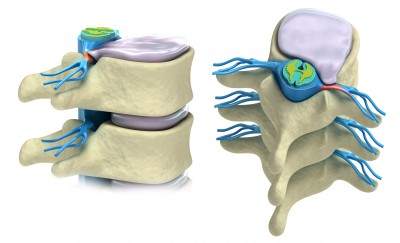
Did you find our previous article, “Disc Herniation Part 1,” helpful but are still battling discomfort? Are you eager to discover exercises that can effectively reposition your herniated disc and enhance your well-being? You’re in the right place.
In this comprehensive guide, we’ll cover:
- Effective Exercises for Repositioning a Herniated Disc: Learn the top movements to gently coax your disc back into alignment, reducing pain and improving mobility.
- Stabilization Techniques to Prevent Disc Displacement: Discover exercises that strengthen your core and back, ensuring your discs stay in place.
Understanding Lumbar Disc Herniation:
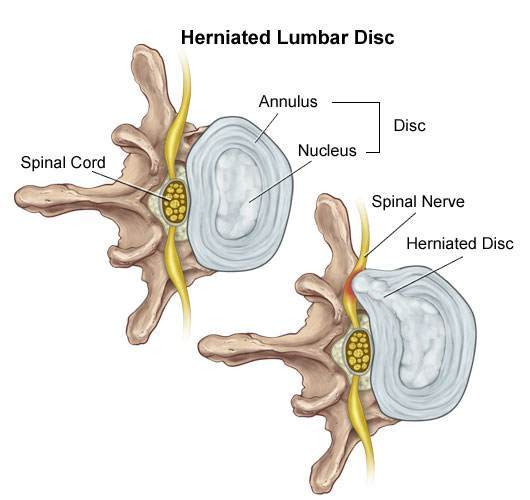
A herniated disc occurs when the disc’s nucleus breaks through the annulus, as shown in the illustration from neurosciences.beaumont.edu. But what triggers this displacement? The primary culprit is forward bending, which compresses the disc (think of it as a jelly-filled doughnut) and can lead to the annulus fracturing, allowing the nucleus to protrude and press against nerves.
Why Does it Hurt?
The disc’s exterior is tough cartilage, while its interior is softer, akin to mucus. Applying pressure on one side forces the inner material to the opposite side, similar to squeezing a doughnut. When a herniated disc or inflammation puts pressure on a nerve, pain ensues. The key to relief is applying counterpressure to reposition the disc.
For a deeper dive into herniated discs, refer to “Disc Herniation Part 1: Best Self-Treatments for Lumbar Disc Herniation.“
How to Apply Counterpressure:
The strategy involves bending your spine backwards or into the extension to shift the disc away from the nerve.
Exercises to Reposition a Herniated Disc: Note of Caution:
Initially, these exercises might intensify your pain slightly. If pain significantly worsens or radiates further down your leg during these exercises, cease immediately and consult a professional.
Exercises for Lumbar Herniated Disc
#1 Prone Lying Lumbar Herniated Disc
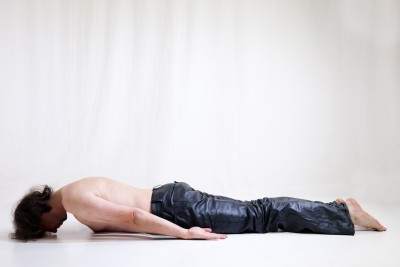
- Lie face down or prone in bed with your elbows tucked in under your side:
- As soon as you get up in the morning you should lie prone (face down). By getting in this position, your lower back becomes more arched, or as doctors say, you increase your lordosis.
- The increased lordosis pushes on the back of the disc helping to bring the nucleus forward into the correct position.
#2 Sphinx pose in Yoga For Lumbar Herniated Disc
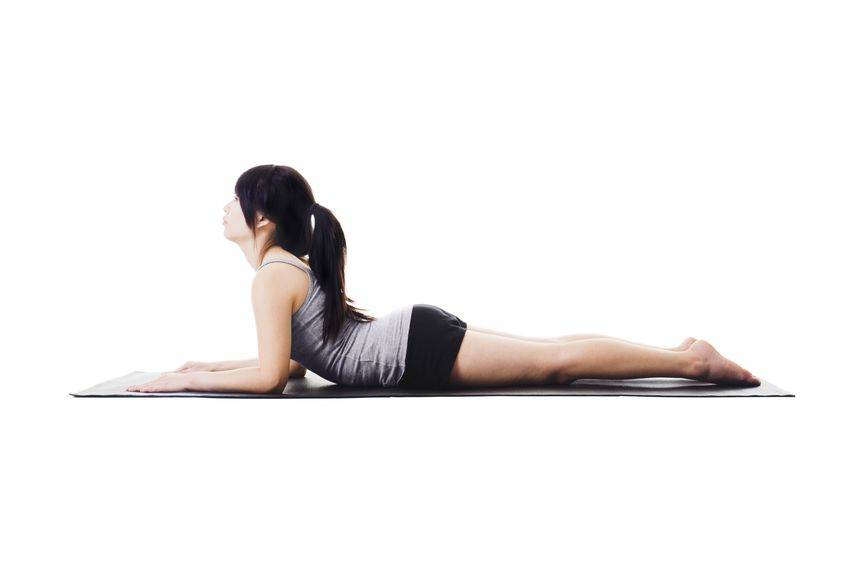
- Get into the prone position lying down on your stomach.
- Next, get on your elbows. If you have a hard time with this position go back into the prone lying position.
- Do these exercises hold each time for 1-2 seconds 6-8 times per set? This exercise can be repeated every two hours throughout the day.
Asses yourself. If the pain has decreased or the pain has moved away from the leg or thigh and into the hip or buttock, this is an improvement. Even if the pain is increased in the back but relieved in the leg this is an improvement and a green light that you should continue this exercise. You also get a green light if there is no difference at all.
- If your self-assessment gives you the green light, move on to the Cobra exercises just below.
- If your thigh or leg pain is worse, then stop right away.
- If your lower back, thighs and legs are the same you get a green light, so move on to the Cobra exercises.
#3 Cobras For Lumbar Herniated Disc
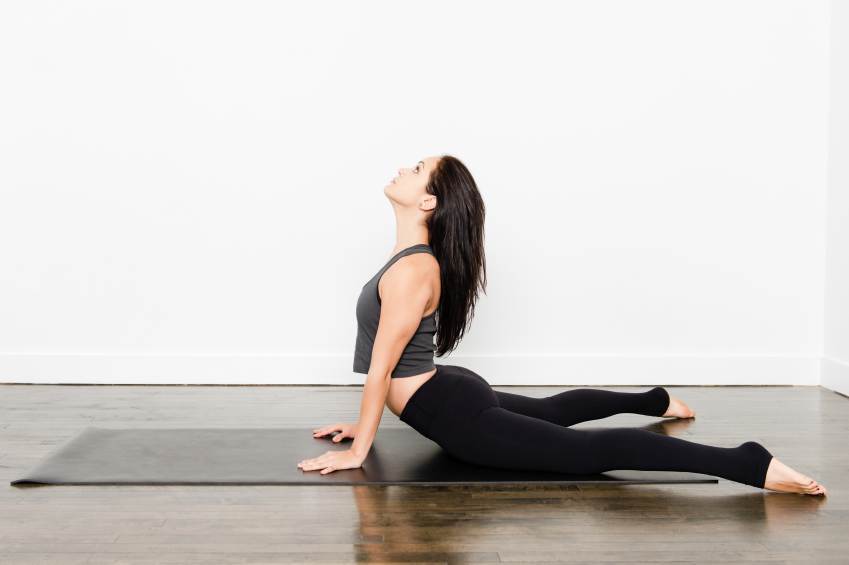
- Lie down face down with your hands underneath your shoulders.
- Push up from as high as you can until your lower back stops you or your elbows are straight.
- The pelvis should still be on the floor and the lower back muscles relaxed.
- Do these exercises hold each time for 1-2 seconds 6-8 times per set? This exercise can be repeated every two hours throughout the day.
Asses yourself. If the pain has decreased or the pain has moved away from the leg or thigh and into the hip or buttock, this is an improvement. Even if the pain is increased in the back but relieved in the leg this is an improvement and a green light that you should continue this exercise. If your thigh or leg pain is worse, then stop right away.
#4 Standing Extensions Lumbar Herniated Disc
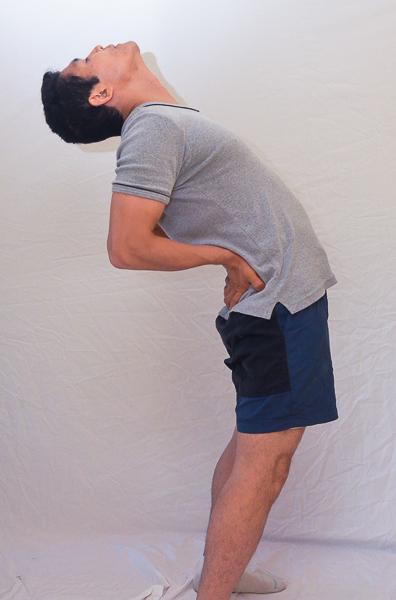
- Stand straight and put your hands behind your hips with your fingers facing down.
- Push your hands into your pelvis so that your lower back arches.
- Don’t use your lower back muscles
- These exercises can be done 6-8 times for 1-2 seconds. This exercise can be repeated every two hours throughout the day.
Stabilization Exercises: Prevent Your Disc From Coming Out By Having A Stable Spine.
#1 Cat-Camel or Cat-Camel For Herniated Disc
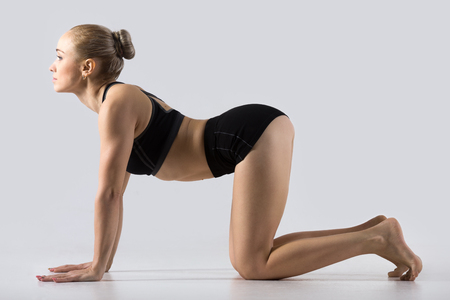
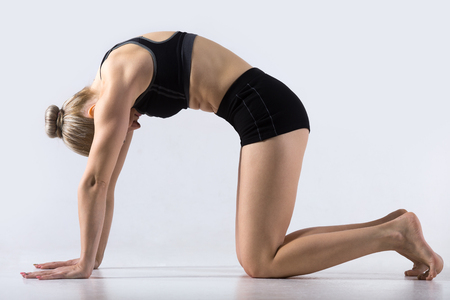
- On all fours with your knees under your hips and hands under your shoulders.
- Inhale and let your belly fall downwards toward the floor as you look up toward the ceiling for 2 seconds.
- Exhale and arch your back up as far as it will go or until you feel pain. You should not feel pain with this exercise, otherwise you are going too high.
- At the same time bend your neck forward and look toward your navel.
#2 Curl-Ups
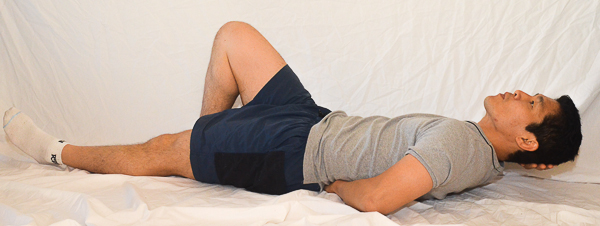
- To start, one foot is bent and the other is straight.
- One forearm goes under the arch of your lower back to support it.
- The other arm is supporting your head.
- Your head and neck come up as one block until your shoulder blades clear the floor.
- Do three sets of 5 working your way up to 10. If it’s easy, then hold for a couple of breaths.
#3 Squats
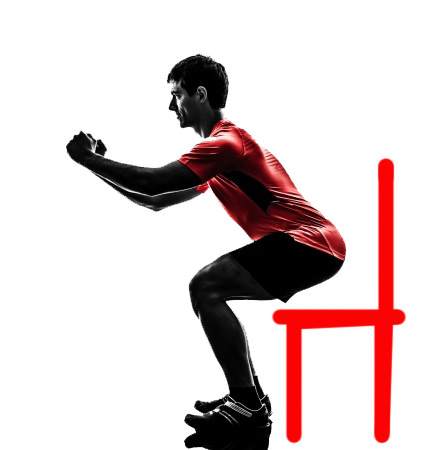
- Stand in front of a chair as if you are going to sit on it.
- Stand with your feet facing slightly more outward than your knee.
- Make sure your butt comes out, and keep lowering your butt until you touch the chair.
- Practice 3 sets of 10.
#4 Bird Dog
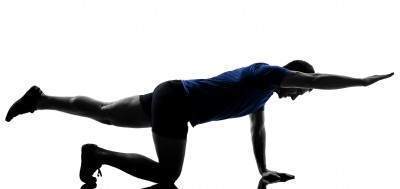
- Get into a crawling position with your hands and feet shoulder-width apart.
- Harden your core by contracting your abs and lower back. This is called bracing.
- Lift your arm first. If this is easy, then lift your leg only. If that is easy, then lift the opposite legs and arms, for example, right leg, and left arm.
- Want to make it tougher? Try lifting an arm and leg on the same side.
- 3 sets of 10. If you are shaking a little or cannot balance quite right, you’re doing the right exercise for you, i.e. lifting just the leg or arm might be easy, but lifting opposite arms and legs might put you off-balance a bit. Make sure you are stable before going to the advanced bird dog.
Tell us what you think in the comments below and like us on Facebook. This Toronto Downtown Chiropractor will answer all questions in the comments section. Let us know your vote for the best Toronto chiropractor in the comments section.
References
1. J Med Genet 2002;39:387-390 doi:10.1136/jmg.39.6.387


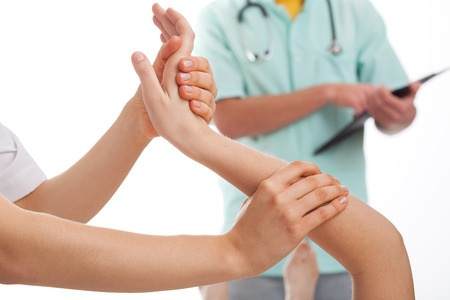

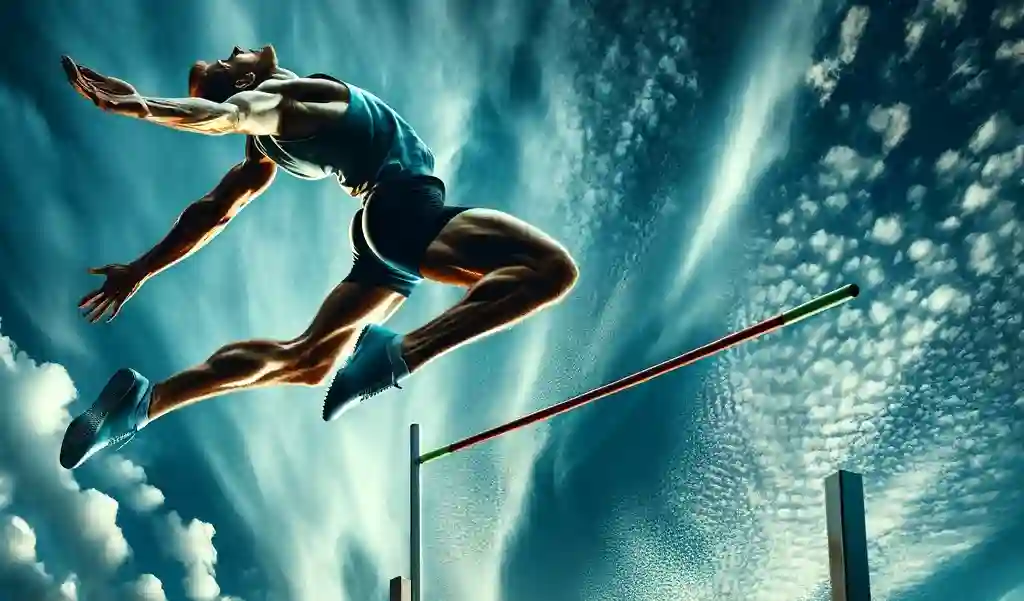
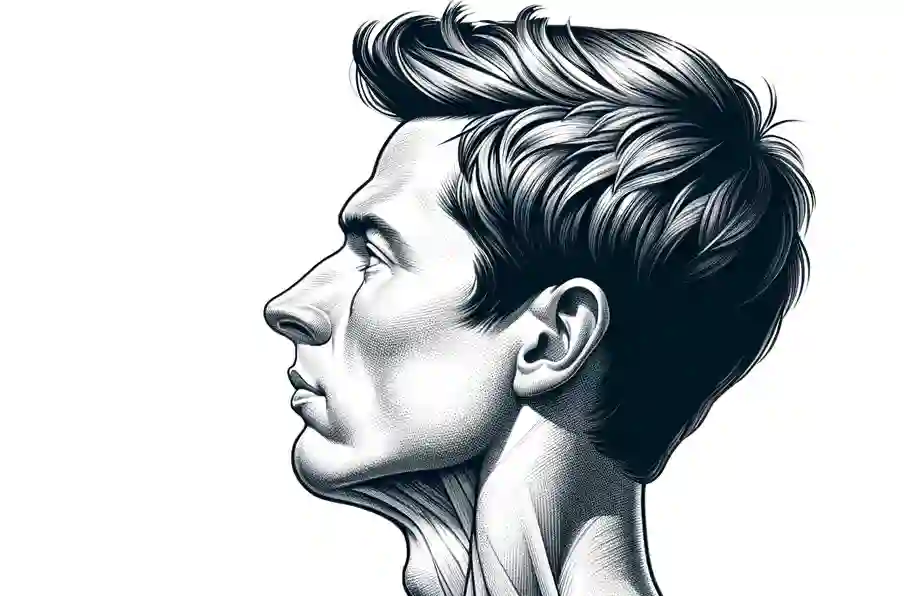
Sir, I am a medical student. I have finished MBBS and now pursuing for post graduation. Sir I have disc herniation L5-S1. I am regularly following the exercises. Now I have a good posture and onot occasional paraesthesia on taking abnormal losture. But my doubt is I am interested in orthopedics since my school days. Will I be able to become so with this herniation. Will this affect my career. Please help me with your words. Also for how many times I should do the exercises
Author
Thanks for your question Rajkumar. So you have finished your medical degree (MBBS). So I am assuming from what you are saying that you want to become a orthopedic surgeon and are asking if you can do this with a disc herniation.
I treat surgeons as they get in bad positions at the operating table leaned over and having to hold their arms up especially when doing laproscopic surgery. Also in Canada it depends on your senority how high the table will be. The table is adjusted for the most senior surgeon at the table and the taller people have to bend over more while the shorter doctors stand on stools and end up bent over at the hips.
This is terrible for these residents that I treat. Also it depends on how much surgery there is per week and how long the surgeries are. While discectomies are short spinal fusions can be many hours from my understanding.
My guess is that you will have a hard time if you decide on the this course but each hospital and country are different but at least those are some things to consider.
I can only say that I currently treat three surgeons right now as the bending over the table is terrible for their lower back. I am guess that this causes some surgeons to retire early from surgery and see patients in a clinical setting only and refer patients for surgery when they need it.
Hope that helps your choices regarding your L5-S1 disc herniation.
Dr Ken, I read almost all your article about back pain treatment/care here. I am having disc bulge and degenerative on my lumbar spine. Your article never speak about what is the best or good sleeping position for people like me. Can you please help on this?
Thank you for your time and information. It is greatly appreciated.
Author
Thanks for your question Dayron. Sleeping posture is usually best on the side away from the pain. eg. If you have right sided pain it is usually more comfortable on the left. Put a pillow between your legs and hang onto a pillow with your hands. Also for most disc hernitations it is best not to curl up in the fetal position. In fact the opposite is usually better with the legs and hips extended backwards.
However it depends on the type of hernitation and most importantly the comfort you have when going in that position. Everyone is different so what you think will work won’t always work.
Hope that helps give you some ideas about sleep posture and a herniated disc.
Hello,
I recently had a lumbar spine MRI done after having knee pain and instability that turned into leg numbness, twitching, and spasms. I had pain in both legs that would be sharp and come and go. The spine MRI showed a 2mm diffuse disc protrusion with annular tear effacing the thecal sac. Hypertrophy of facet joints and ligament Flava noted. Spinal canal and neural foramina are patent. I do also have left lateral scoliosis which I knew about. My question is how bad is this, can I recover fully from this, will I have restrictions and limitations from this forever, and what can I do to best help myself recover. No idea what caused it! Waiting 2 weeks for consult with spine doctor.
Thank you for your time and information. It is greatly appreciated.
Author
Thanks for your question Michelle. Yes if the disc protrusion is along with the hypertrophy of the facet joints and the ligament flava is the cause the problem then you will likely recover. However it will likely take a long time and you will need professional help as the pain is in both legs which is more difficult to treat. Combined with the scoliosis it makes for a more difficult recovery.
Hope that helps your disc herniation.
Thank you so much for taking the time to respond to all these questions! My MRI stated the results as above but when I went to the orthopedic specialist to review the MRI he did not see a herniated disc or tear in the images. I’m left wondering who to trust! have you heard of radiologists and doctors disagreeing on images a lot?
I have an appointment with a spine specialist next week to review the MRI as well which will hopefully help with determining what is really going on. The orthopedic specialist thinks instead that I have Piriformis Syndrome. I do sit all day for work and am not very active when I get home from work. He attributes the knee issues to my extremely lax ligaments and poor muscle strength. I am also still going through with an EMG that I had scheduled for today for the tingling, pain, and numbness in my legs.
It is an awful place to be in not knowing what is wrong with you! Again thank you for taking your time to answer and talk with each of us. It is very helpful and comforting.
Michelle
Author
Thanks for your question Michelle. With a 2 mm broad based bulge it is difficult to see also the annular tear is subtle. Also any surgeon is used to seeing very obvious herniations that they usually have to operate on. In your case there is nothing obvious to operate on and likely too subtle for the orthopedic surgeon to see. Radiologist see more MRI as that is what they do all day so likely sees more than the orthopedic surgeon.
They are both seeing the same thing but interpreting it differently. That’s all. Likely the spine specialist will see things differently. Also remember there are good bad and ugly in every profession. It should become apparent with three opinions that someone is missing things.
From what you have told me and the MRI report your case is not surgical. Remember I don’t have all your information like an examination that I would do.
Hope that helps your disc bulge.
Apologies for not replying sooner.
Thank you for your advice. I am slowly easing into step ups and I will be starting curl ups as soon as I can get an appointment with a physiotherapist.
Thank you again,
Alex
Author
You are welcome Alexandra.
I am a 14 year old female with one ruptured disc and one bulging disc both in lower back. Do you have any advice for what i should and shouldn’t do regarding exercise? I’ve been researching for a while now+ couldn’t find any reliable sources until now. I miss being able to do sit-ups and step-ups. I wasn’t sure if any exercises would be good for one and bad for another.
Thank you for the article. This is a huge relief as now I can start doing some movements that I know are safe.
Author
Thanks for your question Alexandra. Assuming that the ruptured disc or the bulging disc is causing the pain the exercises here in this article will help most people. I wouldn’t do any sit-ups but you can do curl-up and step-ups.
This article has the curl-ups.
Any exercise has the potential to make you worse, so the exercises should be supervised by a health professional.
Hope that helps your ruptured disc.
Hi Dr. Ken, thank you for the helpful and informative article. I am 34yrs old and was doing well till February 2015 except for a mild cervical spondolytis which ache my left shoulder sometimes which goes upto my left hand as my work requires that i sit in the computer the wholeday. In Feb 2015, i heard a twitching sound at the lower back while lifting a heavy bag. The next day there was acute pain in my buttock and in the evening i had a seizure for 3 times. I was admitted in the hospital and was diagnosed with neurocysticercII in the frontal region of the brain. Was treated in the hospital and doing fine with no seizure till date. Few days after discharged, i start experiencing a gentle jerk on the left leg and also the hand which happens twice or thrice a day especially before falling asleep. This has decreased now. However, since the seizure on Feb 2015, i hav been having low back ache and also at the buttock radiating to left leg upto foot posterior aspect. The pain is on and off in onset and persist for 5 to 10mins and sometimes 30mins which is bearable. Consulted a Neurologist, and MRI of L.S. Spine show degerative and desiccation and central protrusion of L5-S1 disc with thecal and bilateral traversing nerve roots compression. NCS of both lower limbs shows no evidence of neuropathy but evidence of bilateral S1 radiculopathy. VEEG report is normal. I am taking my medications as advised and was told to visit the Doctor after 6 weeks. The doctor says i hav to take care and if it gets worst i hav to go for a surgery. Dear Dr. Ken, please advise me what exercises should i do to get better? Your advice will highly be appreciated. Thanks a lot. Rocky.
Author
Thanks for your question Rocky. Sounds like your disc protrusion and your Neurocysticercosis are separate problems. I would simply do the exercises here in this article.
They should be supervised by a health practitioner. If they pain gets worse or goes further down the leg in fact if any symptoms are further down the leg like numbness, tingling or pain than you should stop the exercises.
Hi Dr. Ken. Thanks for the reply and advice. I get the pain in the leg when standing for long period about 1 hour. I also have tingling sometimes while resting or sleeping. However, when doing the mac kenzie exercise. The pain in the leg subsides and go away. Should i continue the exercise? If i hav to stop what should i do? Kindly advice. Thanks.
One more question Dr, i have to drive one and half hour to my work and another one and half hour coming back. Is it ok for me tp drive? Kindly advice. Thank you.
Author
Thanks for your question Rocky. You should definitely continue the exercises. Most people have no choice but to work. If it doesn’t make the pain go further down the leg or cause numbness or tingling down the leg than you are good. For most people though that is the things that makes them worse. It’s up to you to decide if prolonging your recovery is worth it. I don’t know if you you can afford time off work, you have flex hours etc…
Hope that helps your herniated disc.
Thank you for your kind advice. Wishing you a healthy life and God bless you.
Author
You are welcome Rocky.
Dear,
I am having l4-l5 mild disc bulge and impression on thecial sac. I get pain in hips when stand for very long time. Please can you suggest some thing and how serious is this issue? Will it cause more problem in future. What medication should I take/ exercises.
Thanks and regards,
Prabhakar
Author
Thanks for your question Prabhakar. Like your MRI or CT scan says it’s a “mild disc bulge”, but read on to find out a little more.
1. Yes it can cause a problem in the future.
2. Medication in this case will only mask the problem, provided that is what is causing your problem. A MRI that says a disc bulge doesn’t prove that is what’s causing your pain. A diagnosis is made by careful history taking and examination not MRI. Research has proven MRI results have no correlation to pain. Meaning you can have severe disc herniations with no pain but have a mild disc herniation with severe pain.
Just try the exercises in this article. They must be supervised by a health practitioner such as your neighborhood chiropractor.
Thanks for the reply doctor. Should I do physical exertion? Is my bulge towards the right or left? Will I be able to recover fully? I’m very worried doctor. I feel pain during prolonged sitting.
Thanks for the reply doctor. Doctor I wanted to ask whether my bulge is towards right or left and will it be fine with exercises? I’m only 22. I want to exert physically. Are these exercises going to push my disc back? Because what i want to understand is that there should be different exercises for different cases. What are the exercises for my specific case? Thanks
Sir I’ve tried all the exercises and I feel no pain what so ever in doing these exercises told by you. What should I do? And does that depict something? Good or bad?
Author
Thanks for your questions Taha. You should do the exercises in this article and don’t do any other exercise.
Answers:
1. The disc is affecting both sides.
2. You should recover fully -if you mean out of pain but it will reoccur. That’s just normal
3. Like I said do the exercises. I am basing this recommendation based on what you wrote.
4. If you don’t feel pain while doing the exercises than that is a good sign.
I have already answered the other questions.
Hope that helps your possible disc herniation.
I have been diagnosed with PID in L5-S1 which is I believe 2nd stage of disk herniation (Prolapse) as per your article. Local Orthopedic surgeon advised surgery. In the mean while he has prescribed Muscle Relaxants and Vitamin tablets, Lumber support belt and exercises. I am 30 yrs old and have a sitting job, I am not keen on surgery. Can you help me with non-surgery options ? Will Sphinx / Cobra or anything else can help me to get the disk back in original position ?
Author
Thanks for your question Ashutosh. If you haven’t tried conservative therapy your surgeon is a little too keen. It’s just not ethical. Try the exercises in this article. Also the exercises should be supervised by a health professional.
Hope that helps your disc herniation.
Hy Dr.ken, I’m having symptoms of Genital & scrotal numbness while sitting on hard surfaces which relieves when I stand up. Also I’m having some loss of sensation on my penis since a month (Can say 20% reduction). Also Im having low back pain which i feel upon sitting for 30 min and riding bike (Motor Cycle) for 15 min. I feel a little pain when I bend forward in the areas just above my butt. From this symptoms,my family doctor doubted, it could be because of some disk bulging at l5-s1. Pls help whether these are common symptoms with this disk bulge or there could be some other reason.
Author
Thanks for your question Pradeep. Not likely but if you have a bad disc herniation it is possible. You need to get a good second opinion from someone that can examine you.
Hope that helps your possible disc herniation.
Hi Doctor,
I have a question about tingling on my both legs. I have had bulged disc on L5-S1 since 3 years ago, diagnosed by MRI. At that time, pain was so intense that I was not able to sit and walk smoothly. Then I had non-open surgery, using lazor to decompress disc. It went well and I have been working and living a normal life, even athletic activities, since then. However, Tingling on my both leg(including foot ) persisted and it still bothers me. The degree of symptom haven’t worsened (somewhat got better, but perhaps i just got used to) Do you recommend any exercises or even surgery to fix? I have done standard stretches PT taught me and some of McKenzie stretches. I think it helped me to keep my hip and back flexible and health, but not really on tingling. I appreciate your opinion.
Author
Thanks for your question Andrew. You can have trapped nerves from the muscles that tightened up even if the disc is fixed. They were probably never treated properly. Without an examination I can’t tell you where but you should get someone else to examine you that knows.
Hope that helps your disc herniation.
Hi doctor ,
Its been nearly 8 months since i was first told about me having a mild bulge in lumbar discs via an mri .. The symptoms have reduced significantly from then to now . Earlier i used to have heavy numbness stiff in thighs knees and foot that intereferd with daily activities of walking sleeping and sitting and standing. Now my symptoms are mild and dull on off tingling in both foot on sides and underneath. This is very irritating since it demands and attraction a lot of my conscience which is possibly delaying the healing . No doctor till now has told me concretely what the tingling is due to . It s pinched nerve but they havent beeen able to ascertain where the pinched nerve is located . And hence the physical therapy treatments arent proving as effective as they can be until now. Though the symtoms are mild ans not interfering with daily activities i fear for a potential nerve damage . Is that true and possible if left unattended ? What are the apt stretches that can potentially help ascertain the line of treatment .. Currently i am doing mainly knee to chest and prone up stretches on my own . I do have a bad spasm in the back also at about l1 to l4 levels which my doc said is a protective mechanism of the body against the disc pressure. The tingling is all in the foot and none in upper leg. Should i be too worried with the level of symtoms i face ?
Author
Thanks for your question Niketh. That’s great that you seem to be getting better. The pinched nerve sounds like it is at L5S1 pinching the S1 nerve or possibly both the S1 and L5 nerve according to what you have written. That’s basic and any doctor or chiropractor would know that.
While it’s possible to get permanent nerve damage, but for the vast majority of the time the nerve recovers. It is unliklely that you have permanent nerve damage from what I have read. You should be concerned but you can always get another opinion from someone that can examine you.
I would get a second opinion from a neurologist.
Hope that helps your possible disc herniation.
Hi Dr Ken
At the outset, Thank very much for your patient listening, kind advice and insights. In my case, I was traveling a lot and suddenly one day, experienced shooting pain in my lower back on the left side with pain radiating through my left leg till the knees. Never had such pain earlier, I saw an Orthopedic and he put me on medication and advised to undergo MRI. MRI scan shows:
1. L3-4: Normal
2. L4-5: Mild annular disc bulge
3. L5-S1: Annual disc bulge with LT paracentral disc extrusion probably impinging the traversing L5 nerve root.
4. Other lumbar discs: No significant herniations
5. Both SI Joints are normal.
6. Disc dehydration is noted at L5-S1.
IMPRESSION:
L5-S1 ANNULAR DISC PROTRUSION WITH LT PARACENTRAL EXTRUSION.
As I understand, there are 4 stages of disc herniation; In which stage, mine would fall under? I was advised that surgery is not required but need to be careful and not bend forwards, lift weights and no running. I like running a lot and used to run almost 5-8 Kms daily. My questions:
1. How bad is my disc herniation?
2. Can I perform the exercises advised in your articles?
3. Can I “push” my disc back to its original state?
Thank you!
Best Regards
Sudhakar
Author
Thanks for your question Sudhakar.
1. Your disc herniation is moderate but many people like you have no pain. Others have more severe pain.
2. You should try the exercises in the article but any exercise can make you worse. You should stop the exercises if the pain increases or if you can any other symptoms going further down the leg such as numbness, tingling or pain. The exercises need to be supervised by a health care practitioner like a chiropractor.
3. Yes you can push your disc back, but the hole in your disc will remain.
Hope that helps your disc herniation.
Thanks Doctor for your kind advice.
Author
You are welcome Sudhakar.
Thanks Dr Ken. I will start the exercises and keep you informed on my progress. Many thanks for your valuable help and advise, it is really appreciated.
Author
You are welcome CSC.
Dear Dr Ken,
For the past 2 months I have tried so many things eg chiropractor, physiotherapy massage, clinical therapist massage but the burning pain in calf did not go away. My doctor prescribed medication (lyrica) and sent me for an MRI as he said I have loss of reflex upon examination. My MRI results are:
– at l4/5 there is a mild disc dehydration and circumferential disc bulging. The disc bulging together with moderate bilateral facet anthropathy is seen to cause mild spinal canal stenosis and impingement onto traversing L5 nerve roots.
My doctor told me that since the pain has not gone in 3 months the only solution is either injection or surgery. Can you please give me some advice as to best way forward.
Thanks,
Claudine
Author
Thanks for your question CSC. You can always try another chiropractor or physiotherapist. It is the skill of the practitioner not the type of the practitioner that is important. Also doing an injection is a possibility. I find that injections often help enough so that the treatments helps more.
Hope that helps your L5 nerve root.
Dear Dr Ken,
I am a 41 yr old mother of 2 young children and have been experiencing pain for the past 4 weeks. The main pain is in my left calf when standing, it feels like burning sharp pain. I feel no pain when sitting or sleeping. I am taking pain meds, visiting a clicinal massage therapist twice a week and go swimming nearly every day. I tried acupuncture but it did not help with the pain.
My X-ray results are – some narrowing of L5/S1 disc with no osteophyte formation. The other disc spaces are intact and no significant facetal joint disease – Degenerative disc change in the L5/S1 disc with almost certain left sciatic root irritation. No significant bony lesion is evident
Can you please advise me of the best exercises for my pain and whether the pain will actually go away completely one day!
Thanks for your help.
Author
Thanks for your question CSC. First X-rays and pain often don’t correlate to pain. Often time with degenerative changes there are disc herniations which cannot be seen on X-ray. You can try these exercises based on what you have told me but based on your symptoms there is a chance that you will be worse with these exercises.
I would get these exercises supervised by a health professional as any exercise can make you worse. If the pain is going further down the leg or any symptoms go further down the leg than you need to stop the exericse.
Hope that helps your possible disc herniation.
Dear Dr Ken,
Thanks for your reply. In my case would it be better to have an MRI to establish where the pain is coming from. If the exercises are not good for me is there any other treatment to make me feel better. Also what is the best sleeping position?
Sorry for all the questions, but I don’t know what to do with the pain and don’t want surgery.
Thanks
Author
Thanks for your question CSC. MRI also don’t correlate with pain. It’s a matter of taking your history, exam and any imaging and putting it together by diagnosis. Too many people are diagnosed by imaging which is often wrong. The research shows that 30% of 30 years and 60% of 60 years old with no pain have disc herniations.
If the exercises don’t help there are likely other exercises that will. From what you have told me no surgeon should be recommending surgery.
Surgery should only be done when:
1. Conservative therapy of at least 6 months has been done and failed.
2. Disc herniation of >8mm
3. Bowel or bladder problems due to the disc
4. Worsening neurological problems like muscle wasting or drop foot that is getting worse.
You have mentioned any of those things. Unless you have at least one of those positive above than you shouldn’t be getting surgery.
Hope that helps your lower back pain.
Hi Dr. Ken,
I am a 21 year old and after a medical examination I was diagnosed with a 4.6mm L5-S1 annular bulging disc. I weigh 76kg and am 177cm tall.
The pain I feel is a sharp sensation on my lower left back, and as of yet, feel no pain in my butt, leg, or feet – only the sharp pain in the lower left lumbar.
What exercises are best to do in addition to what you have provided above? Since the disc is also left-lateral, how can I ensure I am pushing it back to the front AND to the right? Is there even a way?
Secondly, what sorts of gym exercises (weights, running, etc.) and sports can I do? I don’t feel any significant pain when doing sports such as volleyball and soccer, only when I shift my spine/hip to the right do I feel the pain on that lower left back.
And finally – what is the best position to sleep in?!
I hope you can answer my questions, as I feel you advice and explanations so far have been the best I have yet to see!
Many thanks,
Paul
Author
Thanks for your question Paul. No matter the type of disc herniation you should start with the extensions shown in this article providing the diagnosis is correct. While there are other exercises even in the clinic I start people with the extension to see how they respond, and most do respond.
Soccer is a little dicey as the tackles are unpredictable so you will be at the mercy of the unknown. Volleyball I find is a little more controlled and you are surrounded not by opposition but teammates even though there is always some level of risk. Running is fine as long as it is not aggravating your pain. I would avoid any heavy weights even bench etc.. but most of all avoid squats and deadlifts as well as bent over rows and Good Mornings.
You should sleep on your back or your side but never in the fetal position your legs should be behind you / the opposite of the fetal position.
Hope that helps your possible annular disc bulge.
Hi Dr. Ken,
I’ve been an avid mountain biker and have competed marathon bikes races for over 20 years. 6 years ago while doing lunges with dumb bells I “slipped” a disc. I was done for a year, intense pain for 8 -10 months down to my toes and finally recovered after regular physio and light exercises.
Recently, I somehow reinjured the same area with the same symptoms but less intense. This time I have no idea what triggered this episode. I’m 53 years old and fear I may have to give up the biking passion. hope this is not the case. can you recommend specific exercises that will put me back in the saddle again and prevent this from occuring again. Thank you
Author
Thanks for your question Keith. The problem is the hole is the disc remains although the disc got pushed back.
First remember not to aggravate your lower back. Second part is putting the disc back.
Don’t aggravate your back by not going in the arrow position and keeping the arch in your lower back while you ride. Read this article. https://www.bodiempowerment.com/disc-herniation-part-1/
Putting the disc back should be accomplished by the exercises in this article.
Hope that helps your “slipped” disc.
Dear,
I am having l4-l5 mild disc builge and impression theical sac. Fell when stand or walk for long time.
Thanks ,
Prabhakar
Author
Thanks for your comment Prabhakar. Hope your disc bulge gets better.
Thank you kindly Dr Ken for your input.
Back issues certainly seem complex. I have been doing prone props and McKenzie push ups under chiropractic advice to little avail. I am scheduled for a visit w a neurosurgeon next month. I will certainly keep your researched information in mind as I start w this new Dr.
Please have a terrific .
Lisa
Author
Thanks for your comment Lisa.
Hope you get better soon.
Dear doctor i just want to say Big Thank you for making this articles available for us to read and share , its truly a blessing, also wanted to say thank you for answering all the questions as i know it must take time as there is so many
I have been experiencing back pain since i was 19 so about 12 years now,i am a Hairstylist so i spend a lot of my day on my feet bending forward etc.i used to have a lot of upper back pain which was awful ,but ive managed to control it by rolling my back on a firm foam roller, but years have past and now for about 4 years ive been having lower back pain (a lot) sometimes pain goes down my leg sometimes just to mu left buttock
here is my MRI scan results just a week ago
MRI Spine Lumbar and sacral : T1 and T2 sagittal and T2 axial (L3 to S1
There is normal alignment of the lumbar spine .
There is dehydration of the L4/5 and L5/S1 interverteblar discs.
At L4/5 there is focal posterior central disc bulge which is indenting the theca .The spinal canal remains capacious and there is no nerve root compression .
At L5/S1 there is a broad based posterior disc bulge which is causing narrowing of both lateral recesses .
However there is no definite root compression.
No significant disc pathology at the other imaged levels .There is normal bone narrow signal.the spinal cord terminates at L1 and there is normal spinal cord signal .No pathology is demonstrated in the visualised paraspinal tissues .
Conclusions :
Disc bulges at L3/4 and L4/5 levels as described .No evidence of neural compression .
Thank you for your time and looking forward to your message
Author
Thanks for your question Yogi. While your MRI and history don’t match up it is likely that after hours of standing that the disc comes out more compressing the nerves. Off course the MRI can’t see that as it’s not taken after you have been standing for a long period of time.
You should try the exercises in this article. Exercises can always make you worse they should be supervised by a health professional like a chiropractor.
Hope that helps your disc bulges.
Thank you for quick reply
I’d love to go and see you but I live in UK
Author
You are welcome Yogi.